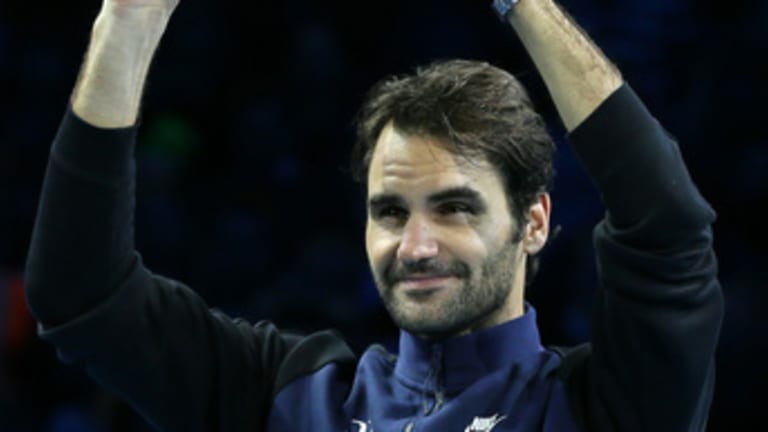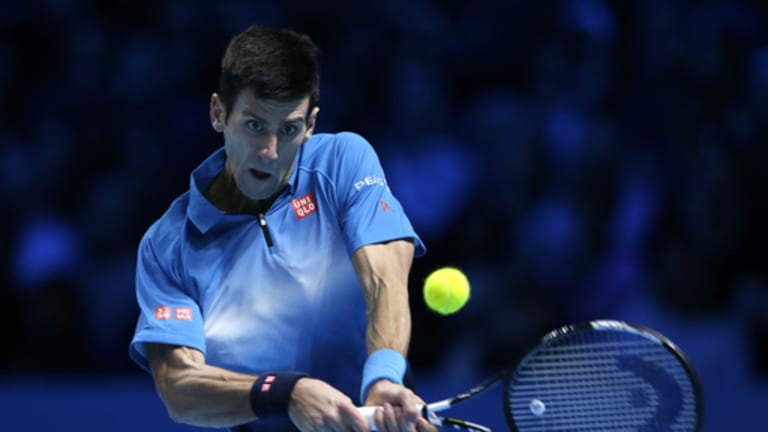The ATP’s year-end championships in London really did provide a perfect—or at least perfectly appropriate—summation of the 2015 season. Novak Djokovic won his 11th title, in his 15th straight final, to put a hard-earned exclamation point on the best and most dominant season of his career. And he did it with a 6-3, 6-4 victory over Roger Federer, the same man he had beaten in the finals of the year’s two biggest events, Wimbledon and the U.S. Open.
The similarities didn’t end there. For me, Djokovic’s 2015 season, and his rivalry with Federer over the last 12 months, could be boiled down to two points they played in Sunday’s final.
The first of those points came in the second set at 3-3, 15-15, on Djokovic’s serve. Federer had just put together a strong hold, and the crowd, which had been looking for a reason to get behind him for at least an hour, was murmuring. At 15-0, Federer brought them to their feet when he moved the Serb all over the court and finished the rally with a leaping overhead. At 15-15, Djokovic missed his first serve, causing more murmurs. If Federer was going to make a move, this seemed to be the moment.
Instead, Djokovic hit an excellent, high-kicking second serve that forced Federer back, and on the next shot Federer flipped a weak backhand into the net. The crowd quieted again—all you could hear was Federer’s groan of frustration—and Djokovic won the next three points to hold serve and re-steady the ship. At Wimbledon this year, Djokovic had used his first serve to foil Federer; at the O2, it was his second serve that did the job. He won 84 percent of his second-serve points, and repeatedly pushed Federer back by kicking the ball into his body. Djokovic took, you might say, the SABR out of Federer’s hand.


